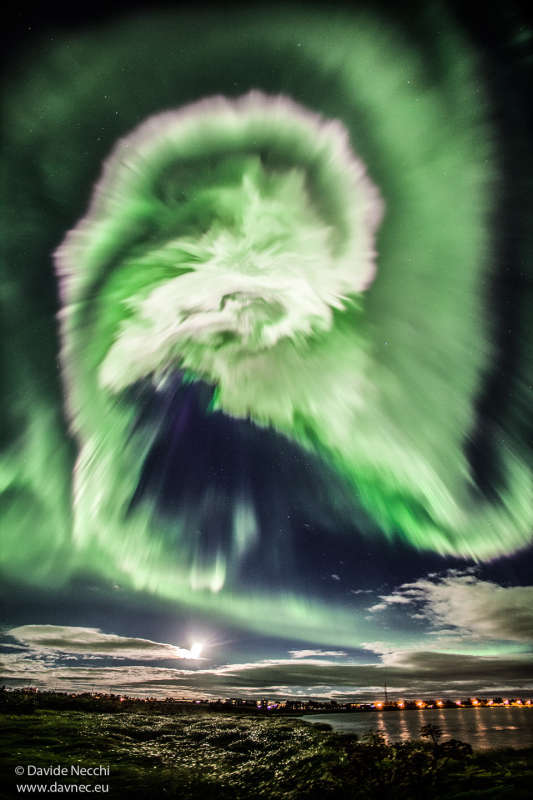Credit & Copyright: Davide Necchi
Explanation:
What's happened to the sky?
Aurora!
Captured late last month, this
aurora was noted by
Icelanders for its great brightness
and quick development.
The aurora resulted from a solar storm,
with high energy particles bursting out from the Sun and through a
crack in Earth's protective
magnetosphere
a few days later.
Although a spiral pattern can be discerned,
creative humans might imagine the complex glow as an atmospheric
apparition of any number
of
common
icons.
In the foreground of the featured image is the
zhlfusA River,
while the lights illuminate a bridge in
Selfoss City.
Just beyond the low clouds is a nearly full Moon.
The liveliness of the Sun -- and the
resulting auroras on Earth -- is slowly diminishing as
the Sun emerges from a
Solar maximum
of surface activity and
evolves towards
a historically more quite period in its 11-year cycle.
In fact, solar astronomers are
waiting to
see if the
coming
Solar
minimum will be as unusually quiet as the
last one, where sometimes months would go by with
no discernible sunspots or other active solar phenomena.
Follow APOD on:
Facebook,
Google Plus,
or
Twitter
1999 2000 2001 2002 2003 2004 2005 2006 2007 2008 2009 2010 2011 2012 2013 2014 2015 2016 2017 2018 2019 2020 2021 2022 2023 2024 2025 |
Yanvar' Fevral' Mart Aprel' Mai Iyun' Iyul' Avgust Sentyabr' Oktyabr' Noyabr' Dekabr' |
NASA Web Site Statements, Warnings, and Disclaimers
NASA Official: Jay Norris. Specific rights apply.
A service of: LHEA at NASA / GSFC
& Michigan Tech. U.
|
Publikacii s klyuchevymi slovami:
aurora - polyarnoe siyanie - severnoe siyanie - Solnechnaya aktivnost'
Publikacii so slovami: aurora - polyarnoe siyanie - severnoe siyanie - Solnechnaya aktivnost' | |
Sm. takzhe:
Vse publikacii na tu zhe temu >> | |
